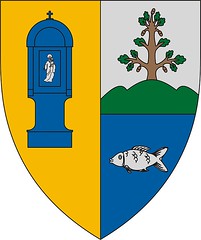Someone generate judgments about other individuals’ sexuality considering gender stereotypes
To help make sense of the whole world in rapid, simple methods we frequently rely on stereotypes and groups. Nothing illustrates this much better than our noticeable have to figure out who’s homosexual and who’sn’t. Those who have the capability to divide society into gay and non-gay tend to be said to need gaydar, while doesn’t have to be homosexual for they. In case you are gay, this may be is practical the reasons why you may want to know (assistance, enchanting or gender partner, people), in case you aren’t, it’s anyone’s guess. Why we wish or need to know who is gay-to repulse united states, to ignite attraction, not to wed one, to join them-is not the matter in this article. Instead, I target what it is.
The vital concern is just how can we get it done, what are those signs that tips the ideas? They evaluate four wide categories that people count on:
Eg, in analysis conducted by Dr. tip yet others, members categorized male faces as directly or homosexual much better than chances (above 60percent rather than a 50percent potential degree), even when the watching time was just one-twentieth of the second, face didn’t vary in mental expressions, and hair styles are cropped out. This increase suggests that judgments about a person’s intimate positioning is done instantly, outside awareness and intention, a€?similar to how group immediately plan evident party datingmentor.org/bumble-vs-okcupid/ variations (elizabeth.g., era, battle, and intercourse).a€? And, as tip and Alaei advise us, precision a€?may getting higher still in real-world relationships in which a few of these cues is concurrently offered.a€? Dr. guideline tells me he’s amassed data that may address this matter.
In one of the most readily useful overviews of gaydar fundamentals, Nicholas tip and Ravin Alaei merely believe that we a€?rely on a variety of subdued cues that guide view and actions,a€? even without consciously recognizing that which we are doing or what we are counting on
From the evidence, a number of these judgments are produced (whether consciously or perhaps not) centered on a gender inversion principle-gay men as feminized and lesbians as masculinized. Including, different from directly people, research shows that homosexual people have quicker noses, smaller nostrils and, differing from straight people, lesbians has fuller lips and underbites.
There’s a rather big literary works documenting this sex inversion concept for sexual direction communities (complete disclosure: several of which I added to). I would like to advise, however, one serious problem utilizing the study, three inquiries for future studies, and one study plan I’d specially like to see resolved.
For example, the gay photos found in gaydar analysis are extracted from a€?outa€? individuals (on online dating web sites, Facebook, Craigslist)
Are the sexual-minority individuals we recruit as data topics together with pictures we use to illustrate them consultant of sexual-minority individuals generally? I can’t answer this matter, and it is a hard one to establish because we do not know what it means to hire a€?randoma€? gays and lesbians, specially because lots of may not diagnose as such (elizabeth.g., not aware they’re gay, are not sufficiently out over participate in homosexual analysis, or should not provide us with their unique information). Become these a€?typicala€? sexual-minorities? Might their sex inversion has caused these to self-identify as gay/lesbian and has disclosed this fact? Could gays/lesbians who are not out-by choice or design be identified as homosexual by raters? We realize that people who hidden their particular homosexuality had been thought by strangers much more apt to be direct (Tskhay guideline, on line). I’m not sure the responses, however these dilemmas ought to be thought about in the future gaydar data. That is, can we posses gaydar of intimate personality stereotypes or gaydar of intimate orientation?



Leave a Reply